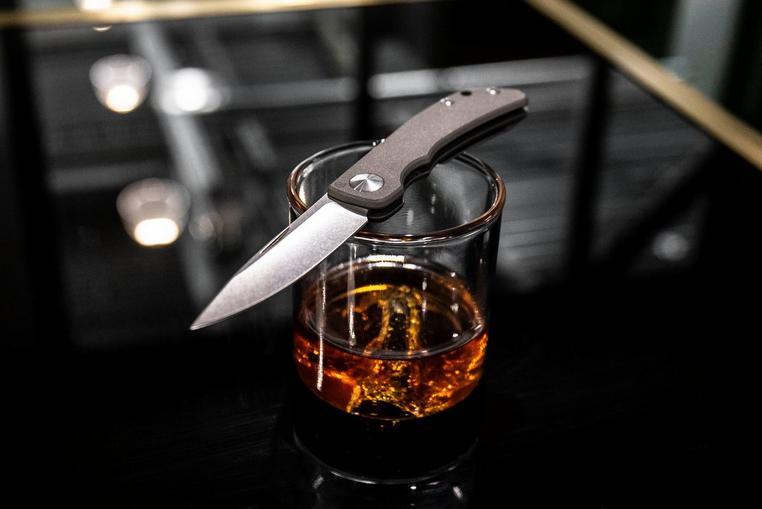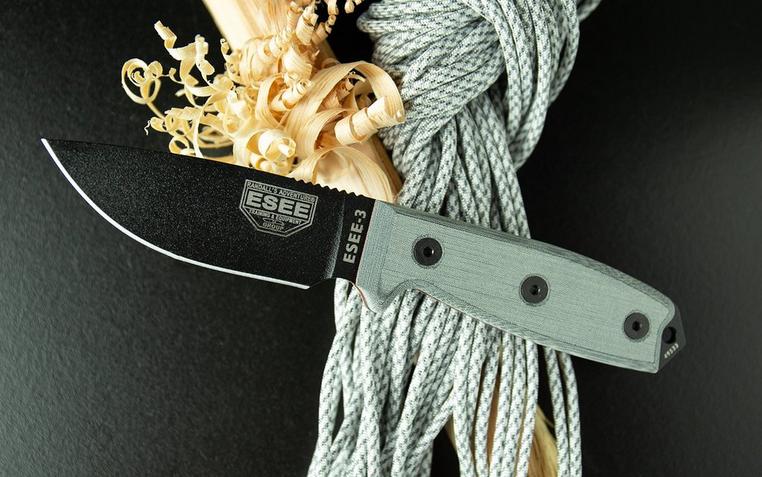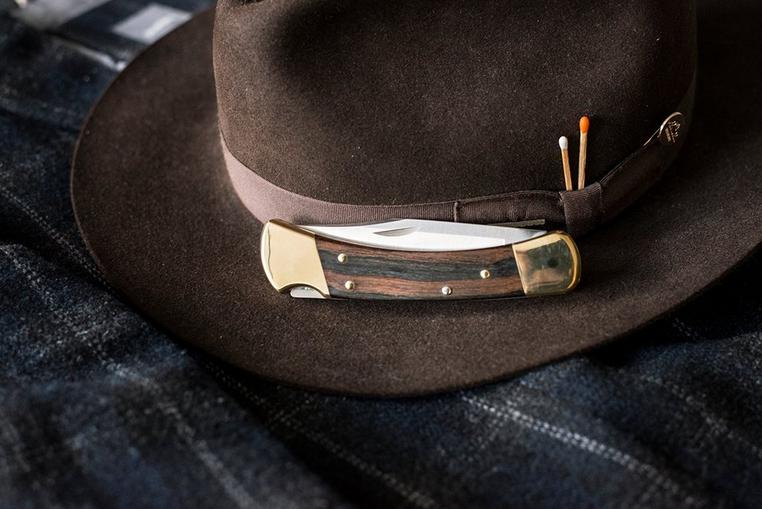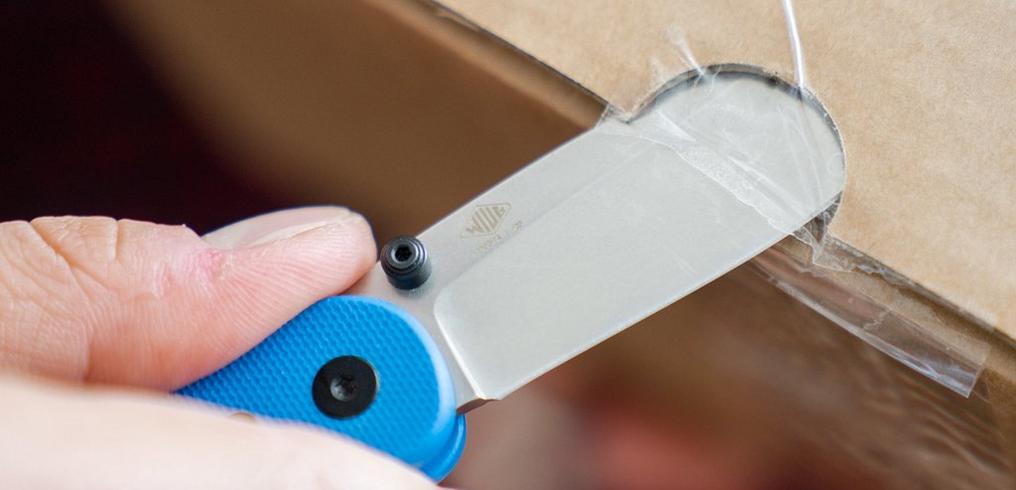What is the best type of knife steel?
The discussion about what ‘the best type of steel’ for a knife is, has been around since the emergence of steel knives. After all, ‘the best knife steel’ doesn’t exist. There are many good types of steel, many different styles of steel, but these are not equally suitable for every application.
The question: ‘what is the best steel?’ is in this sense basically equal to the question: ‘what is the best car?’. A Ferrari is a great car, but stuffing it with luggage as you are getting ready for a holiday might be tricky. Not to mention driving it over a sandy, bumpy road somewhere in the middle of nowhere. Conversely you won’t get far in a 4x4 off-road vehicle on the Formula 1 track. The same applies to types of steel.
Which factors are important when it comes a type of steel?
A type of steel is always an alloy of different elements. Because of these different elements specific properties can be improved. However, it will always be a compromise. More of A means less of B. More of B means less of C, etc.
Different qualities you need to pay attention to when it comes to steel are: sharpness retention, toughness, rust resistance, and how easy you can sharpen it. There are actually no types of steel that excel in all four.
What will you use the knife for?
For that reason the quest for the best type of steel starts with the following question: ‘what will you use the knife for?’. And also think about what you think is important when it comes to a type of steel. When you know you can start looking at the different available types of steel. For that reason we have listed a couple of specific types and categories based on their purpose.
Types of steel for EDC
For everyday carry you will probably look for steel that is stainless, retains its sharpness well and isn’t too hard to sharpen. Toughness doesn’t really play a role in general when you open boxes or peel an apple. A couple of popular types of steel for this category are: CPM, S35VN, VG10, CPM S30V, Böhler M390, Böhler N690 or one of the other dozens of types of steel. A favourite budget option is 8Cr13MoV steel. Quite the mouth full, but it is mostly a stainless type of steel that is easy to sharpen, while it is also still pretty tough. This type of steel, however, doesn’t retain its sharpness as well.
There are of course a couple of more exclusive types of steel which are popular in this category. We have collected these on this page with EDC knives made from super steel.
Survival and bushcraft knives
You expect a robust outdoor knife not to break, and to be tough. In addition, you need to be able to sharpen it in the field, and it should retain its sharpness fairly well. We are talking about survival and bushcraft knives. Stainlessness is not as important here: if you properly maintain it and/or apply a proper coating you will go a long way. For that reason carbon steel of tool steel is often used for these purposes. Think of: D2, 1095, CPM 3V, Sleipner, A2 or another type of carbon steel. Often incredibly tough and easy to sharpen with limited means when you are out in the field.
Machetes
Simple carbon steel is often used for machetes. Often even more simple that the carbon steel that is used for normal fixed knives. Think of 1055-carbon steel or 65Mn. After all, a machete doesn’t have to remain sharp, all it needs to do is not break.
The heat treatment of the steel
An important side note is that a type of steel on its own doesn’t say that much. More important is the heat treatment of the steel. A famous saying in the knife world is, as such: ‘steel is the heart of the blade, but the heat treatment is the soul’. We couldn’t really find out who came up with this saying but we wholeheartedly agree.
Finish and grind
In addition to heat treatments you also need to pay attention to the finish of the blade and the grind. A knife enhanced with a stonewashed finish is inherently more resistant to rust than a knife that is sandblasted. In terms of grind it is important to realize that a thinner blade doesn’t have to endure as much resistance as it is used, which means that the blade is also affected less and can remain sharp longer. At the same time a thin blade is more fragile than a thicker blade. So less break-resistant.
Conclusion
These are a couple of examples and points of interest you can use when selecting a new knife. It is important to know that we have based our findings on the average applications of these types of steel. There are always brands and manufacturers who handle their steel a little differently to make it excel even more on certain levels.
In addition, your preferences might differ from those of others. To each his own. Think, for instance, of the outdoor knives category. Rust sensitivity may not bother many, but in maritime surroundings, on the coastline or in your fishing case it can be tricky if you see your knife perish due to rust. Even though the current types of steel are much better than those produced 20-30 years ago you won’t be taking any actual risks. Yes, type A will retain sharper longer then type B, but how substantial are the differences? You can often conclude that it is not that bad. For that reason you should get all the information you could need to learn what you will need for your situation. On our page about knife steel you will find more information about types of knife steel.




?%24center=center&%24poi=poi&%24product-image%24=&fmt=auto&h=490&poi=%7B%24this.metadata.pointOfInterest.x%7D%2C%7B%24this.metadata.pointOfInterest.y%7D%2C%7B%24this.metadata.pointOfInterest.w%7D%2C%7B%24this.metadata.pointOfInterest.h%7D&scaleFit=%7B%28%24this.metadata.pointOfInterest%29%3F%24poi%3A%24center%7D&sm=c&w=1016)

?%24center=center&%24poi=poi&%24product-image%24=&fmt=auto&h=490&poi=%7B%24this.metadata.pointOfInterest.x%7D%2C%7B%24this.metadata.pointOfInterest.y%7D%2C%7B%24this.metadata.pointOfInterest.w%7D%2C%7B%24this.metadata.pointOfInterest.h%7D&scaleFit=%7B%28%24this.metadata.pointOfInterest%29%3F%24poi%3A%24center%7D&sm=c&w=1016)


?%24center=center&%24poi=poi&%24product-image%24=&fmt=auto&h=490&poi=%7B%24this.metadata.pointOfInterest.x%7D%2C%7B%24this.metadata.pointOfInterest.y%7D%2C%7B%24this.metadata.pointOfInterest.w%7D%2C%7B%24this.metadata.pointOfInterest.h%7D&scaleFit=%7B%28%24this.metadata.pointOfInterest%29%3F%24poi%3A%24center%7D&sm=c&w=1016)
?%24center=center&%24poi=poi&%24product-image%24=&fmt=auto&h=490&poi=%7B%24this.metadata.pointOfInterest.x%7D%2C%7B%24this.metadata.pointOfInterest.y%7D%2C%7B%24this.metadata.pointOfInterest.w%7D%2C%7B%24this.metadata.pointOfInterest.h%7D&scaleFit=%7B%28%24this.metadata.pointOfInterest%29%3F%24poi%3A%24center%7D&sm=c&w=1016)